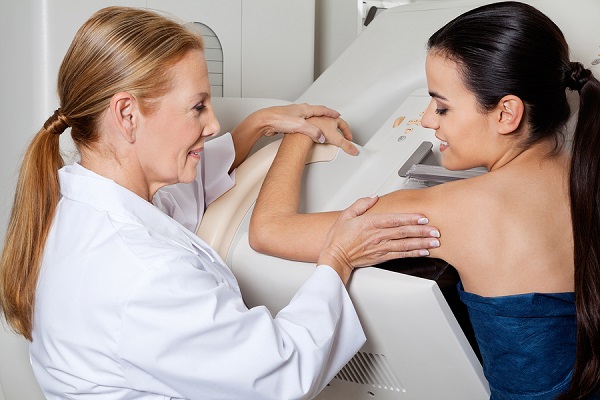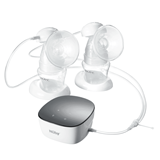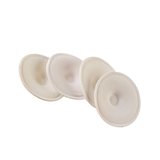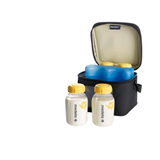Read Part 1 of 'Growing uncertainty about breast cancer screening'
The randomised trials did not adequately measure the harms of breast screening. For the most part, they didn't measure them at all. But evidence of harm has been steadily accumulating.
The main harm is through over-diagnosis: harmless breast cancers found by screening are treated when without screening they wouldn't have been found at all.
In contrast to the small decline in advanced cancer rates, early-stage breast cancer rates have doubled over the last 30 years, strongly suggesting over-diagnosis. An estimated 1.3 million US women are thought to have been over-diagnosed due to screening.
The impact on these women's lives, on the lives of their families and the social and economic effects of over-diagnosis is worth serious consideration.
While the frequency of over-diagnosis is still contested (estimates range from one-and-a-half to ten over-diagnosed cases for every breast cancer death prevented), its existence has been documented in countries including Canada, France, Australia, Norway and Sweden.
Advocates of screening point out that even if some women are over-diagnosed, the side effects of early breast cancer treatment (surgery, radiotherapy, hormone therapy and chemotherapy) are worth it. Better to be safe than sorry.
But evidence of unexpected side effects is also growing. We know now that radiotherapy increases women's risk of having and dying from heart attacks five to 20 years after treatment. It also increases the risk of lung cancer.
Late effects of radiotherapy are important as most women with breast cancer have radiotherapy, and live for many years after it. It's especially important in light of over-diagnosis of screened women in their 50s and 60s.
This uncertain picture of breast screening from 20 years of observational (non-randomised) studies isn't surprising. Observational studies provide only "silver medal" evidence about the benefit and harms of screening because they are very susceptible to bias.
In particular, they suffer selection bias - comparing groups of screened and unscreened women who are different in key ways, such as their risk of breast cancer, use of hormone replacement therapy, and lifestyle factors including diet, obesity, reproductive lives and alcohol consumption.
This can lead to misleading conclusions about how many lives are saved by screening and how many cases of over-diagnosis are caused.
Observational studies are also liable to length bias (the tendency of screening to find slow-growing cancers that have excellent prognosis, contributing to over-diagnosis) and lead-time bias (screening finds cancers earlier but may just advance the time of diagnosis rather than prevent death, giving people more "disease time" but no extra years of life).
These are prone to make screening look more effective than it really is.
This is why both the UK Independent Breast Screening Review Panel and the Cochrane Review continue to rely on the older randomised trials that date back to the 1960s. They may be old, but these randomised trials at least provide evidence with a much lower risk of bias.
What do we do now?
It's 50 years since the first breast screening randomised trial began, and ten years since the first Cochrane review spoke strongly of screening's harms.
Evaluation of national breast screening programs has clearly been a long-term proposition but one that has failed to resolve our most important questions: does screening work today? And how much over-diagnosis does it cause?
It's time to acknowledge the true depth of our uncertainty about both the benefits and the harms of breast cancer screening as it is practiced today.
To resolve these questions, we need to do new randomised trials of modern breast cancer screening. New trials are needed because the practice (the quality of mammographic imaging has improved) and context (breast cancer treatments are so different now) of screening has changed so much that we can't reliably apply the results of the old trials any more.
And we need to do randomised trials because more than ever we need "gold medal" evidence - 20 years of observational studies has proved that observational studies are just not good enough to answer our fundamental questions about modern screening.
The forthcoming expansion of screening to women aged between 70 and 74 is a rare opportunity for Australia to do just this. We may manage to find data that will be valued by the rest of the world.
- Suppliers
- New to MedicalSearch? Book a Demo
- Advertise with us
- Login
- Email Marketing
- Buyers
- Get Quotes
- Articles & Ideas
- Login
- Subscribe to newsletter
- My Details
- Get Quotes
- Accident & Emergency Care
- Aged Care & Disability
- Anaesthesia & Respiratory Care
- Beauty & Wellness
- Cardiology & Cardiac Surgery
- Commercial Cleaning & Laundry Supplies
- Dental Care & Oral Surgery
- Diagnostic Instruments & Medical Imaging
- Disinfection & Sterilisation
- ENT & Audiology
- Gynaecology & Obstetrics
- Homecare & Consumer Medical
- Hospital Equipment & Supplies
- Intensive Care Unit
- Laboratory & Pathology
- Medical Apparel
- Medical Devices & Products
- Medical Fridges & Freezers
- Medical Storage & Filing
- Medical Waste Management
- Optometry & Ophthalmology
- Orthopaedics & Podiatry
- Paediatrics & Neonatology
- Patient Monitoring & Management
- Physiotherapy & Rehabilitation
- PPE & Infection Control
- Single Use Medical Consumables
- Surgical Tools & Supplies
- Treatment Beds, Tables & Couches
- Veterinary Equipment
- Wheelchairs & Mobility Aids
- Get Quotes
- Accident & Emergency Care
- Aged Care & Disability
- Anaesthesia & Respiratory Care
- Beauty & Wellness
- Cardiology & Cardiac Surgery
- Commercial Cleaning & Laundry Supplies
- Dental Care & Oral Surgery
- Diagnostic Instruments & Medical Imaging
- Disinfection & Sterilisation
- ENT & Audiology
- Gynaecology & Obstetrics
- Homecare & Consumer Medical
- Hospital Equipment & Supplies
- Intensive Care Unit
- Laboratory & Pathology
- Medical Apparel
- Medical Devices & Products
- Medical Fridges & Freezers
- Medical Storage & Filing
- Medical Waste Management
- Optometry & Ophthalmology
- Orthopaedics & Podiatry
- Paediatrics & Neonatology
- Patient Monitoring & Management
- Physiotherapy & Rehabilitation
- PPE & Infection Control
- Single Use Medical Consumables
- Surgical Tools & Supplies
- Treatment Beds, Tables & Couches
- Veterinary Equipment
- Wheelchairs & Mobility Aids
Trusted by 520,000 Australian medical buyers
Buyers
- Discover products & solutions
- Login
- Subscribe To Newsletter
- Browse All Products
- Read Articles
Suppliers
Advertise
- Promote your products & solutions
- New to MedicalSearch? Book a Demo
- Login / Forgot Password
- Advertise Your Products
- Success Stories
- Email Marketing
- Suppliers
- Advertise with us
- Login
- Email Marketing
- Buyers
- Get Quotes
- Articles & Ideas
- Login
- Subscribe to newsletter
- My Details
Get Quotes
- Accident & Emergency Care
- Aged Care & Disability
- Anaesthesia & Respiratory Care
- Beauty & Wellness
- Cardiology & Cardiac Surgery
- Commercial Cleaning & Laundry Supplies
- Dental Care & Oral Surgery
- Diagnostic Instruments & Medical Imaging
- Disinfection & Sterilisation
- ENT & Audiology
- Gynaecology & Obstetrics
- Homecare & Consumer Medical
- Hospital Equipment & Supplies
- Intensive Care Unit
- Laboratory & Pathology
- Medical Apparel
- Medical Devices & Products
- Medical Fridges & Freezers
- Medical Storage & Filing
- Medical Waste Management
- Optometry & Ophthalmology
- Orthopaedics & Podiatry
- Paediatrics & Neonatology
- Patient Monitoring & Management
- Physiotherapy & Rehabilitation
- PPE & Infection Control
- Single Use Medical Consumables
- Surgical Tools & Supplies
- Treatment Beds, Tables & Couches
- Veterinary Equipment
- Wheelchairs & Mobility Aids
Get Quotes
- Accident & Emergency Care
- Aged Care & Disability
- Anaesthesia & Respiratory Care
- Beauty & Wellness
- Cardiology & Cardiac Surgery
- Commercial Cleaning & Laundry Supplies
- Dental Care & Oral Surgery
- Diagnostic Instruments & Medical Imaging
- Disinfection & Sterilisation
- ENT & Audiology
- Gynaecology & Obstetrics
- Homecare & Consumer Medical
- Hospital Equipment & Supplies
- Intensive Care Unit
- Laboratory & Pathology
- Medical Apparel
- Medical Devices & Products
- Medical Fridges & Freezers
- Medical Storage & Filing
- Medical Waste Management
- Optometry & Ophthalmology
- Orthopaedics & Podiatry
- Paediatrics & Neonatology
- Patient Monitoring & Management
- Physiotherapy & Rehabilitation
- PPE & Infection Control
- Single Use Medical Consumables
- Surgical Tools & Supplies
- Treatment Beds, Tables & Couches
- Veterinary Equipment
- Wheelchairs & Mobility Aids
Trusted by 520,000 Australian medical buyers







-160x160-state_article-rel-cat.jpg)
